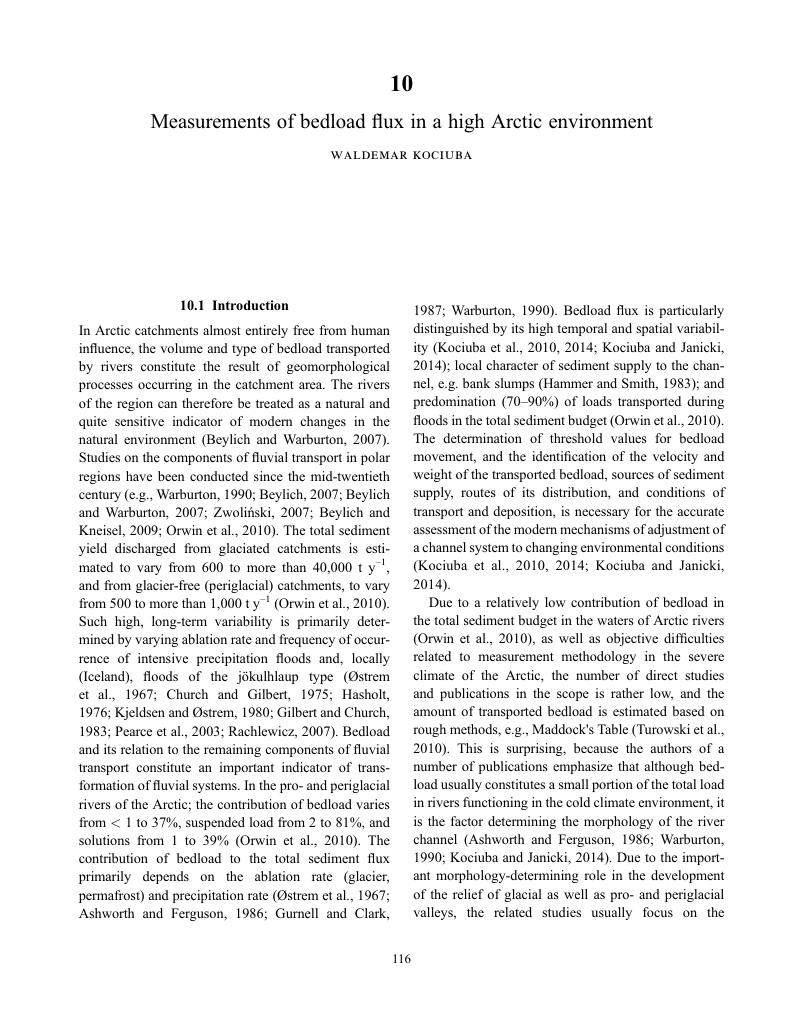Book contents
- Source-to-Sink Fluxes in Undisturbed Cold Environments
- Source-to-Sink Fluxes in Undisturbed Cold Environments
- Copyright page
- Contents
- Contributors
- Preface
- Part I Solute and sedimentary fluxes and budgets in changing cold climate environments
- Part II Climate change in cold environments and general implications for contemporary solute and sedimentary fluxes
- Part III Solute and sedimentary fluxes in subarctic and Arctic environments
- 5 Contemporary solute and sedimentary fluxes in Arctic and subarctic environments: current knowledge
- 6 The use of dendrogeomorphology to recognize the spatiotemporal distribution of snow avalanches in Northern Iceland – case studies from Dalsmynni, Ljósavatnsskarð, and Fnjóskadalur
- 7 A contemporary assessment of sediment and solute transfers in Kärkevagge, Swedish Lapland
- 8 Hillslope processes and related sediment fluxes on a fine-grained scree slope of Eastern Canada
- 9 Sediment and solute transport from Greenland
- 10 Measurements of bedload flux in a high Arctic environment
- 11 Solute and particulate fluxes in catchments in Spitsbergen
- 12 Sediment and solute fluxes at the Igarka field site, Russian subarctic
- 13 Variability and controls of solute and sedimentary fluxes in subarctic and Arctic environments
- Part IV Solute and sedimentary fluxes in sub-Antarctic and Antarctic environments
- Part V Solute and sedimentary fluxes in alpine/mountain environments
- Part VI Quantitative analysis of solute and sedimentary fluxes in cold climate environments
- Index
- References
10 - Measurements of bedload flux in a high Arctic environment
from Part III - Solute and sedimentary fluxes in subarctic and Arctic environments
Published online by Cambridge University Press: 05 July 2016
- Source-to-Sink Fluxes in Undisturbed Cold Environments
- Source-to-Sink Fluxes in Undisturbed Cold Environments
- Copyright page
- Contents
- Contributors
- Preface
- Part I Solute and sedimentary fluxes and budgets in changing cold climate environments
- Part II Climate change in cold environments and general implications for contemporary solute and sedimentary fluxes
- Part III Solute and sedimentary fluxes in subarctic and Arctic environments
- 5 Contemporary solute and sedimentary fluxes in Arctic and subarctic environments: current knowledge
- 6 The use of dendrogeomorphology to recognize the spatiotemporal distribution of snow avalanches in Northern Iceland – case studies from Dalsmynni, Ljósavatnsskarð, and Fnjóskadalur
- 7 A contemporary assessment of sediment and solute transfers in Kärkevagge, Swedish Lapland
- 8 Hillslope processes and related sediment fluxes on a fine-grained scree slope of Eastern Canada
- 9 Sediment and solute transport from Greenland
- 10 Measurements of bedload flux in a high Arctic environment
- 11 Solute and particulate fluxes in catchments in Spitsbergen
- 12 Sediment and solute fluxes at the Igarka field site, Russian subarctic
- 13 Variability and controls of solute and sedimentary fluxes in subarctic and Arctic environments
- Part IV Solute and sedimentary fluxes in sub-Antarctic and Antarctic environments
- Part V Solute and sedimentary fluxes in alpine/mountain environments
- Part VI Quantitative analysis of solute and sedimentary fluxes in cold climate environments
- Index
- References
Summary

- Type
- Chapter
- Information
- Source-to-Sink Fluxes in Undisturbed Cold Environments , pp. 116 - 132Publisher: Cambridge University PressPrint publication year: 2016



